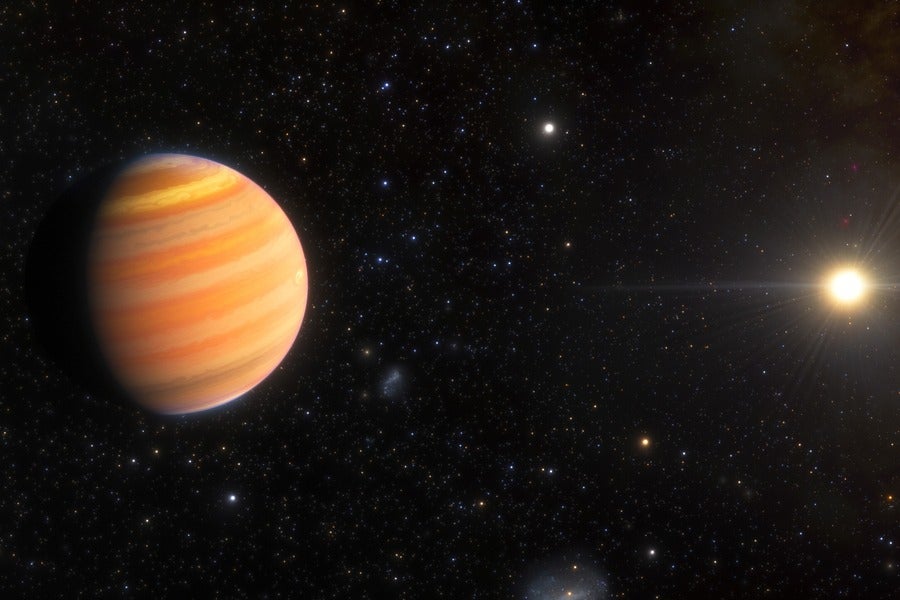Exactly how planets end up so close to their stars is still unknown, but this world’s strange orbit may hold clues.

This artist’s impression shows a Jupiter-like exoplanet that is on its way to becoming a hot Jupiter — a large, Jupiter-like exoplanet that orbits very close to its star.
Credit: NOIRLab/NSF/AURA/J. da SilvaCredit: NOIRLab/NSF/AURA/J. da Silva.
Hot Jupiters, massive worlds that orbit close to their host star, likely weren’t always so hot. Astronomers believe that these exoplanets formed cold, in the outer regions of their star systems, and later migrated inward toward their star. Researchers have now spotted a juvenile planet in the process of doing just that, on its way to becoming a fully fledged hot Jupiter.
The planet, dubbed TIC 241249530 b, is on a narrow elliptical orbit that swings close to its host star before barreling far away. To put the orbit in perspective, the planet passes by its sun at a distance about ten times closer than Mercury is to our Sun, before going past the distance of Earth’s orbit and then back again, all in about 167 days.
That orbit is also likely evolving, changing the planet from cold to hot. “We think that when this planet formed, it would have been a frigid world. And because of the dramatic orbital dynamics, it will become a hot Jupiter in about a billion years, with temperatures of several thousand [degrees]. So it’s a huge shift from where it started,” said Sarah Millholland, study co-author and astrophysicist at MIT, in a press release.
An unusual orbit
Not only is the shape of TIC 241249530 b’s orbit interesting, but the planet also orbits retrograde, or opposite its host star’s direction of spin. This is unlike the planets in our solar system, which all orbit in the same direction as the Sun’s rotation.
After running simulations on the planet, the researchers determined that its orbit is evolving into that of a hot Jupiter through a process called high-eccentricity migration. This process wobbles and shrinks the planet’s orbit through interactions with another planet or star[AK2] . In the case of TIC 241249530 b, its host star orbits a second star as part of a binary system. And interactions between the orbits of the planet and its host star have shifted the likely future hot Jupiter ever closer to its host over time. The team described these orbits interacting with each other as someone simultaneously twirling two hula hoops, one around their wrist and the other around their waist.
Related: Hot Jupiters may form close to their stars
Very few young hot Jupiters
In another billion years, the team estimates TIC 241249530 b will circle its star in a more circular orbit every few days. When this happens, it will officially be considered a hot Jupiter.
The planet was first spotted by NASA’s Transiting Exoplanet Survey Satellite (TESS) in January 2020. Before this, only one other early hot Jupiter, HD 80606 b, was known.
“It’s clear not only from this, but other statistical studies too, that high-eccentricity migration should account for some fraction of hot Jupiters,” Millholland said. “This system highlights how incredibly diverse exoplanets can be. They are mysterious other worlds that can have wild orbits that tell a story of how they got that way and where they’re going. For this planet, it’s not quite finished its journey yet.”

